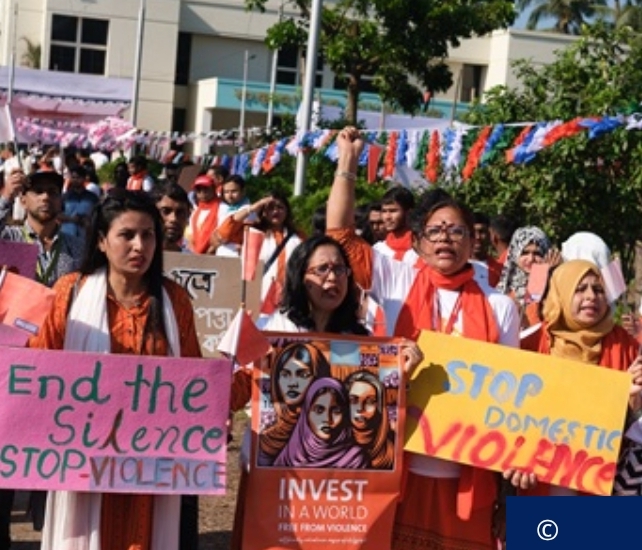More than 840 million women worldwide have experienced sexual or intimate partner violence, according to a new United Nations (UN) and World Health Organisation (WHO) report, revealing that the scale of the crisis has seen almost no improvement in two decades.
The study shows that nearly one in three women has faced abuse in her lifetime, highlighting what experts describe as one of the world’s most widespread yet insufficiently addressed human rights emergencies.
The report, released ahead of the International Day for the Elimination of Violence Against Women and Girls, draws on data from 168 countries collected between 2000 and 2023.
It paints a grim picture of slow progress, noting that rates of intimate partner violence have declined by just 0.2% annually since 2000. In the past 12 months alone, an estimated 316 million women aged 15 and above endured physical or sexual violence from a current or former partner.
Read Also: Scotland’s top law officer reassures sexual assault survivors of safaguard
For the first time, the study also includes national and regional estimates of sexual violence committed by non-partners.
It finds that 263 million women have been subjected to such attacks since the age of 15, though researchers warn that the true number is likely far higher due to chronic under-reporting driven by fear, stigma and weak support systems.
WHO Director-General Dr Tedros Ghebreyesus described the findings as a stark reminder of the urgent need for action, saying the world cannot claim to be fair or healthy when half of its population lives under the threat of abuse.
He stressed that efforts to empower women and protect their rights are critical not only for safety, but also for development and global peace.
Despite the severity of the crisis, the report notes that funding for prevention and support programmes is falling.
In 2022, only 0.2% of global development aid was dedicated to preventing violence against women, and financial commitments have continued to shrink even as conflict, technological change and widening inequality increase risks for millions of women and girls.
The consequences of violence are often lifelong, including higher risks of depression, unintended pregnancy and sexually transmitted infections. Adolescent girls are particularly vulnerable, with 12.5 million aged 15 to 19 experiencing intimate partner violence in the past year alone.
Although cases occur globally, women in conflict-affected, least-developed and climate-vulnerable regions face the highest levels of abuse. Oceania (excluding Australia and New Zealand) recorded a 38% rate of intimate partner violence in the past year, more than triple the global average.
Some progress has been seen in countries that have demonstrated strong political will. Cambodia, for example, is reforming domestic violence laws and improving support services, while nations including Uganda, Liberia and Ecuador have introduced costed national action plans backed by domestic resources.
To reverse decades of stagnation, the UN and WHO are calling for stronger laws and enforcement, better resourced prevention programmes, improved survivor-centred services, and investment in data systems capable of monitoring progress and reaching marginalised groups.
They urge governments to match words with urgent, sustained action to ensure women and girls everywhere can live free from fear and violence.



